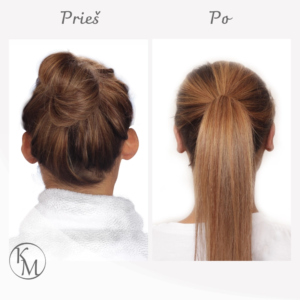Otoplasty
Otoplasty
Otoplasty (or ear plastic surgery) is an surgery that brings the ears closer to the head and can also correct their shape and size.
The surgery is usually relevant for patients who want to correct protruding or unevenly protruding ears. A retraction is detected when the edge of the ear is more than 2.5 cm from the head. Surgery can be performed at a smaller distance if the current ear position is unsatisfactory. The same applies to those with large ears, where the shell of the ear is reduced, or the shape of the ear cartilage is corrected. It is important to know that even if only one ear is unsatisfactory, both ears are usually operated on to achieve symmetry. Ear plastic surgery can be performed on children at the age of 6 years. Ear plastic surgery does not affect hearing.
Otoplasty (or ear plastic surgery) is an surgery that brings the ears closer to the head and can also correct their shape and size.
The surgery is usually relevant for patients who want to correct protruding or unevenly protruding ears. A retraction is detected when the edge of the ear is more than 2.5 cm from the head. Surgery can be performed at a smaller distance if the current ear position is unsatisfactory. The same applies to those with large ears, where the shell of the ear is reduced, or the shape of the ear cartilage is corrected. It is important to know that even if only one ear is unsatisfactory, both ears are usually operated on to achieve symmetry. Ear plastic surgery can be performed on children at the age of 6 years. Ear plastic surgery does not affect hearing.
The process of otoplasty
Otoplasty surgery is performed under either local or general anaesthesia. It lasts 1 hour with local anaesthesia and 1.5 hours with general.
In the case of protruding ear surgery, the incision is usually made on the back surface of the ear so the scar is not visible. The ear separation is corrected with stitches or by removing part of the skin and (if necessary) cartilage.
Before surgery
During the pre-surgery consultation, the surgeon determines the cause of the ear deformity – an oversized cup, an underdeveloped prepuce, excess cartilage.
Post-surgery period
Patients can go home the same day. For the first week after the otoplasty, you should wear a special bandage and sleep only on your back to avoid pressure on your ears. It is normal to feel itchy under the bandages – this is due to the healing process. The bandage should be kept in place when showering to prevent it from getting wet. Swelling or bruising is common after ear correction surgery and will disappear within a few weeks.
In cold seasons you should wear a hat, in warm seasons you should only sunbathe or swim after a few weeks after the ear correction surgery. It is recommended to wear a hair band over the ears at night for 4-6 weeks. Do not take part in sports until 4-6 weeks afterwards.
Surgical risk
Surgery risks are low, but bleeding, infection, healing difficulties, more sensitive skin, skin changes, asymmetry, scarring, suture rejection, necrosis of part of the tissue, watery blisters, and allergies to anaesthesia may occur. All these risks are usually avoided by following the surgeon’s recommendations.
Results
The first results are visible immediately after the surgery. The ear heals completely within a month, but the final result cannot be seen until 2-3 months afterwards.
Frequently asked questions
When is local anaesthesia used to perform the surgery and when is general anaesthesia used?
Local anaesthesia for ear surgery is used when the procedure is minor and the patient can remain calm during the procedure. General anaesthesia is relevant for more complex surgeries (e.g. facial plastic surgery) or when the patient is a child or has severe anxiety requiring general sedation.
Otoplasty for children: can the results of surgery change in the long term?
Ear correction in children is usually performed at the age of 6, when the ears are fully formed – if the surgery is performed earlier, the results may not be long-lasting. If the surgery is performed at the recommended age, the results usually last a lifetime.
How can ear surgery affect hearing function?
Ear correction has no direct effect on hearing function as the surgery is performed on the outer part of the ear.
If I have earrings in my ears, can their location change during surgery?
Ear plastic surgery can affect the location of the piercing holes, but the changes depend on the individual situation – for example if the shape of the ear is corrected in a particularly drastic way. We recommend that you discuss this with your surgeon.




